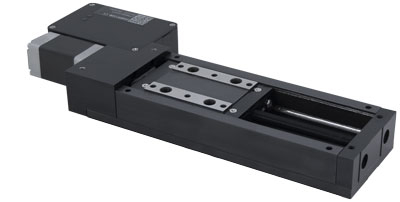LRM Series
Miniature, steel motorized linear stages
About This Series
Zaber's LRM series products are motorized linear stages. The LRM's hardened steel construction and recirculating ball bearing guide provide exceptional rigidity and thermal stability. High stiffness makes the LRM ideal for multi-axis configurations or applications where excellent stability under moment loads is required.
The stages are designed to interface with our X-MCC Series universal motor controllers, offering high resolution daisy-chainable operation. Set up is easy with AutoDetect. Once connected, the X-MCC controller will automatically detect and configure the LRM.

- Up to 8 µm accuracy and 50 nm resolution.
- Up to 100 mm/s speed and 50 N thrust.
- 200 step per revolution stepper motor, microstepped up to 256x provides smooth and precise motion.
- Mounts directly to standard Metric or Imperial breadboards.
- Hardened steel construction and recirculating ball bearing guide provide excellent stiffness and thermal stability.
- Low profile: 21 mm overall height.
- Available in travel lengths from 25 to 200 mm.
- Multiple LRM stages can be assembled into XY or XYZ configurations without additional hardware.
- Panel Mount DB15 with AutoDetect allows the LRM to be easily connected to an X-MCC Series controller and ready to use without additional user input.
Easy Set-Up
With AutoDetect, the X-MCC controller will automatically detect and configure the peripheral. Zaber's devices can share both data and power through a daisy-chain, which reduces cabling and makes set-up as easy as 1, 2, 3:
- Connect the X-MCC controller to your computer.
- Connect the controller to the peripheral and plug in the power supply.
- Send instructions or automate your set-up using the Zaber Launcher.

For more details on daisy-chaining, read our technical article, "Daisy-chaining Data and Power to Reduce Cabling", or to determine which accessories you need for your system, try our Connection Guide Tool.
For additional information about setting up our devices, please visit our Support page, which includes our Getting Started Guide, Troubleshooting Guides, product user manuals, and other resources.